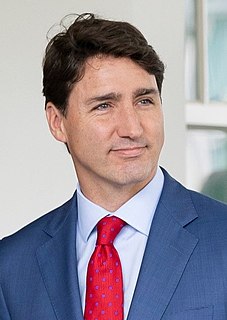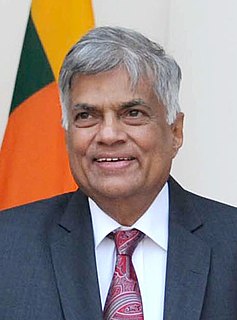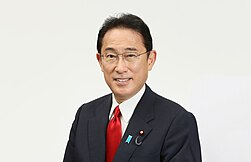
This is a list of all Danish Minister of Defences.
The current office was established in 1905, merging the two previous positions of War Minister (for army matters) and Navy Minister.

This is a list of all Danish Minister of Defences.
The current office was established in 1905, merging the two previous positions of War Minister (for army matters) and Navy Minister.
| No. | Portrait | Minister of Defence | Took office | Left office | Time in office | Party | Cabinet |
|---|---|---|---|---|---|---|---|
| 1 | Jens Christian Christensen (1856–1930) | 14 January 1905 | 12 October 1908 | 3 years, 272 days | Venstre Reform | Christensen Cabinet | |
| 2 | Niels Thomasius Neergaard (1854–1936) | 12 October 1908 | 16 September 1909 | 339 days | Moderate Venstre | Neergaard I Cabinet | |
| (1) | Jens Christian Christensen (1856–1930) | 16 September 1909 | 18 October 1909 | 32 days | Venstre Reform | Holstein-Ledreborg Cabinet | |
| 3 | Ludvig Holstein-Ledreborg (1839–1912) | 18 October 1909 | 28 October 1909 | 10 days | Nonpartisan | Holstein-Ledreborg Cabinet | |
| 4 | Christopher Krabbe (1833–1913) | 28 October 1909 | 5 July 1910 | 250 days | Social Liberals | Zahle I Cabinet | |
| 5 | Klaus Berntsen (1844–1927) | 5 July 1910 | 21 June 1913 | 2 years, 351 days | Moderate Venstre | Berntsen Cabinet | |
| 6 | Peter Rochegune Munch (1870–1948) | 21 June 1913 | 30 March 1920 | 6 years, 283 days | Social Liberals | Zahle II Cabinet | |
| 7 | Henri Konow (1862–1939) | 30 March 1920 | 5 April 1920 | 6 days | Nonpartisan | Liebe Cabinet | |
| 8 | Michael Pedersen Friis (1857–1944) | 5 April 1920 | 5 May 1920 | 30 days | Nonpartisan | Friis Cabinet | |
| 9 | Klaus Berntsen (1844–1927) | 5 May 1920 | 9 October 1922 | 2 years, 157 days | Venstre | Neergaard II Cabinet | |
| 10 | Søren Brorsen (1875–1961) | 9 October 1922 | 23 April 1924 | 1 year, 197 days | Venstre | Neergaard III Cabinet | |
| 11 | Laust Rasmussen (1862–1941) | 23 April 1924 | 14 December 1926 | 2 years, 235 days | Social Democrats | Stauning I Cabinet | |
| (10) | Søren Brorsen (1875–1961) | 14 December 1926 | 30 April 1929 | 5 years, 7 days | Venstre | Madsen-Mygdal Cabinet | |
| (11) | Laust Rasmussen (1862–1941) | 30 April 1929 | 24 November 1932 | 3 years, 208 days | Social Democrats | Stauning II Cabinet | |
| 12 | Hans Peter Hansen (Politician) (1872–1953) | 24 November 1932 | 31 May 1933 | 188 days | Social Democrats | Stauning II Cabinet | |
| 13 | Thorvald Stauning (1873–1942) | 31 May 1933 | 4 November 1935 | 2 years, 157 days | Social Democrats | Stauning II Cabinet | |
| 14 | Alsing Andersen (1893–1962) | 4 November 1935 | 10 April 1940 | 4 years, 158 days | Social Democrats | Stauning III Cabinet–IV–V | |
| None (10 April 1940 – 8 July 1940) (Alsing Emanuel Andersen) | |||||||
| None (8 July 1940 – 4 May 1942) (Søren Brorsen) | |||||||
| (10) | Søren Brorsen (1875–1961) | 4 May 1942 | 29 August 1943 | 1 year, 117 days | Venstre | Stauning VI Cabinet Buhl I Cabinet Scavenius Cabinet | |
| None (29 August 1943 – 5 May 1945) (Søren Brorsen) | |||||||
| 15 | Ole Bjørn Kraft (1893–1980) | 4 May 1942 | 29 August 1943 | 1 year, 117 days | Conservative | Buhl II Cabinet | |
| 16 | Harald Petersen (1893–1970) | 4 May 1942 | 29 August 1943 | 1 year, 117 days | Venstre | Kristensen Cabinet | |
| 17 | Hans Rasmus Hansen (1896–1971) | 13 November 1947 | 30 October 1950 | 3 years, 17 days | Social Democrats | Hedtoft I Cabinet | |
| (16) | Harald Petersen (1893–1970) | 30 October 1950 | 30 September 1953 | 2 years, 335 days | Venstre | Eriksen Cabinet | |
| (17) | Hans Rasmus Hansen (1896–1971) | 30 September 1953 | 25 May 1956 | 2 years, 238 days | Social Democrats | Hedtoft II Cabinet Hansen I Cabinet | |
| 18 | Poul Hansen (1913–1966) | 25 May 1956 | 15 November 1962 | 6 years, 174 days | Social Democrats | Hansen I Cabinet Kampmann I Cabinet Krag I Cabinet | |
| 19 | Victor Gram (1910–1969) | 15 November 1962 | 2 February 1968 | 5 years, 79 days | Social Democrats | Krag I Cabinet–II | |
| 20 | Erik Ninn-Hansen (1922–2014) | 2 February 1968 | 17 March 1971 | 3 years, 43 days | Conservative | Baunsgaard Cabinet | |
| 21 | Knud Østergaard (1922–1993) | 17 March 1971 | 11 October 1971 | 208 days | Conservative | Baunsgaard Cabinet | |
| 22 | Kjeld Olesen (born 1932) | 11 October 1971 | 27 September 1973 | 1 year, 351 days | Social Democrats | Krag III Cabinet Jørgensen I Cabinet | |
| 23 | Orla Møller (1916–1979) | 27 September 1973 | 19 December 1973 | 83 days | Social Democrats | Jørgensen I Cabinet | |
| 24 | Erling Brøndum (1930–2017) | 19 December 1973 | 13 February 1975 | 1 year, 56 days | Venstre | Hartling Cabinet | |
| (23) | Orla Møller (1916–1979) | 13 February 1975 | 1 October 1977 | 2 years, 230 days | Social Democrats | Jørgensen II Cabinet | |
| 25 | Poul Søgaard (1923–2016) | 1 October 1977 | 10 September 1982 | 4 years, 344 days | Social Democrats | Jørgensen II Cabinet–III–IV–V | |
| 26 | Hans Engell (born 1948) | 10 September 1982 | 10 September 1987 | 5 years, 0 days | Conservative | Schlüter I Cabinet | |
| 27 | Bernt Johan Collet (born 1941) | 10 September 1987 | 3 June 1988 | 267 days | Conservative | Schlüter II Cabinet | |
| 28 | Knud Enggaard (born 1929) | 3 June 1988 | 25 January 1993 | 4 years, 236 days | Venstre | Schlüter III Cabinet–IV | |
| 29 | Hans Hækkerup (1945–2013) | 25 January 1993 | 21 December 2000 | 7 years, 331 days | Social Democrats | Poul Nyrup Rasmussen I Cabinet–II–III–IV | |
| 30 | Jan Trøjborg (1955–2012) | 21 December 2000 | 27 November 2001 | 341 days | Social Democrats | Poul Nyrup Rasmussen IV Cabinet | |
| 31 | Svend Aage Jensby (born 1940) | 27 November 2001 | 24 April 2004 | 2 years, 149 days | Venstre | Anders Fogh Rasmussen I Cabinet | |
| 32 | Søren Gade (born 1963) | 24 April 2004 | 23 February 2010 | 5 years, 305 days | Venstre | Anders Fogh Rasmussen I Cabinet–II–III Lars Løkke Rasmussen I Cabinet | |
| 33 | Gitte Lillelund Bech (born 1969) | 23 February 2010 | 3 October 2011 | 1 year, 222 days | Venstre | Lars Løkke Rasmussen I Cabinet | |
| 34 | Nick Hækkerup (born 1968) | 3 October 2011 | 9 August 2013 | 1 year, 310 days | Social Democrats | Thorning-Schmidt I Cabinet | |
| 35 | Nicolai Wammen (born 1971) | 9 August 2013 | 28 June 2015 | 1 year, 323 days | Social Democrats | Thorning-Schmidt I Cabinet–II | |
| 36 | Carl Holst (born 1970) | 28 June 2015 | 30 September 2015 | 94 days | Venstre | Lars Løkke Rasmussen II Cabinet | |
| 37 | Peter Christensen (born 1975) | 30 September 2015 | 28 November 2016 | 1 year, 59 days | Venstre | Lars Løkke Rasmussen II Cabinet | |
| 38 | Claus Hjort Frederiksen (born 1947) | 28 November 2016 | 27 June 2019 | 2 years, 211 days | Venstre | Lars Løkke Rasmussen III Cabinet | |
| 39 | Trine Bramsen (born 1981) | 27 June 2019 | 4 February 2022 | 2 years, 222 days | Social Democrats | Frederiksen Cabinet | |
| 40 | Morten Bødskov (born 1970) | 4 February 2022 | Incumbent | 175 days | Social Democrats | Frederiksen Cabinet | |

A prime minister,premier or chief of cabinet is the head of the cabinet and the leader of the ministers in the executive branch of government, often in a parliamentary or semi-presidential system. Under those systems, a prime minister is not the head of state, but rather the head of government, serving typically under a monarch in a democratic constitutional monarchy or under a president in a republican form of government.

The prime minister of Australia is the head of government of the Commonwealth of Australia. The prime minister heads the executive branch of the federal government of Australia and is also accountable to federal parliament under the principles of responsible government. Anthony Albanese of the Labor Party became prime minister on 23 May 2022.

The prime minister of Canada is the head of government of Canada. Under the Westminster system, the prime minister governs with the confidence of a majority the elected House of Commons; as such, the prime minister typically sits as a member of Parliament (MP) and leads the largest party or a coalition of parties. As first minister, the prime minister selects ministers to form the Cabinet, and serves as its chair. Constitutionally, the Crown exercises executive power on the advice of the Cabinet, which is collectively responsible to the House of Commons.

The prime minister of the United Kingdom is the head of government in the United Kingdom. The prime minister advises the sovereign on the exercise of much of the royal prerogative, chairs the Cabinet and selects its ministers. As modern prime ministers hold office by virtue of their ability to command the confidence of the House of Commons, they sit as a member of Parliament.

The Prime Minister of India is the head of government of the Republic of India. Executive authority is vested in the prime minister and their chosen Council of Ministers, though the President of India is the constitutional, nominal, and ceremonial head of state. The Prime Minister is often the leader of the party or the coalition with a majority in the lower house of the Parliament of India, the Lok Sabha, which is the main legislative body in the Republic of India. The prime minister and their cabinet are at all times responsible to the Lok Sabha.

The prime minister of Japan is the head of the executive branch of the government of Japan. The prime minister directs the National Cabinet and is the commander-in-chief of the Japan Self-Defense Forces; he is appointed by the emperor of Japan after being designated by the National Diet and must enjoy the confidence of the House of Representatives to remain in office. He is the head of the Cabinet and appoints and dismisses the other ministers of state. The literal translation of the Japanese name for the office is Minister for the Comprehensive Administration of the Cabinet.

The prime minister of Israel is the head of government and chief executive of the State of Israel.

The chancellor of the Exchequer, often abbreviated to chancellor, is a senior minister of the Crown within the Government of the United Kingdom, and the chief executive officer of Her Majesty's Treasury. As one of the four Great Offices of State, the chancellor is a high-ranking member of the British Cabinet and is third in the ministerial ranking, behind the prime minister and the deputy prime minister.

The prime minister of Italy, officially the president of the Council of Ministers of the Italian Republic, commonly referred to in Italy as Presidente del Consiglio or informally as Premier, is the head of government of the Italian Republic. The office of prime minister is established by Articles 92 through 96 of the Constitution of Italy. The prime minister is appointed by the president of the Republic and must have the confidence of the Italian Parliament to stay in office.

The President of Sri Lanka is the head of state, chief executive, and de jure head of government of the Democratic Socialist Republic of Sri Lanka. The president is the chief executive of the union government and the commander-in-chief of the Sri Lanka Armed Forces.

Ranil Wickremesinghe is a Sri Lankan politician who is the current president of Sri Lanka since 21 July 2022. He also holds the position of Minister of Finance of Sri Lanka. He is a member of parliament from the center-right United National Party (UNP). He has been the leader of the UNP since 1994. He served as Prime Minister of Sri Lanka in five separate stints, leading six governments, from 1993 to 1994, 2001 to 2004, 2015 to 2018, 2018 to 2019, and in 2022. He also served as Leader of the Opposition from 1994 to 2001 and from 2004 to 2015.
The Government of India, or simply the Centre, is the chief administrative authority of the Republic of India. The National Constitution names the government as the federal executive, legislative and judicial authority. However, the term is usually used to refer to the executive branch. The president acts as the head of state and is the highest figure of nominal executive authority, but it is the prime minister who is the head of the government. The seat of the government is located in New Delhi, the capital of India.

Mahinda Rajapaksa is a Sri Lankan politician. He served as the President of Sri Lanka from 2005 to 2015; the Prime Minister of Sri Lanka from 2004 to 2005, 2018, and 2019 to 2022; the Leader of the Opposition from 2002 to 2004 and 2018 to 2019, and the Minister of Finance from 2005 to 2015 and 2019 to 2021. He has been a Member of Parliament (MP) for Kurunegala since 2015.
The Union Council of Ministers is the highest executive body of the Government of India. The council is responsible for exercising chief administrative authority over the state and advising the president of India. It is chaired by the prime minister and includes the heads of each of the executive government ministries. Currently, the council is headed by prime minister Narendra Modi and consists of 31 members, including the prime minister. The council is subject to the Parliament of India.

Shinzo Abe was a Japanese politician who served as Prime Minister of Japan and President of the Liberal Democratic Party (LDP) from 2006 to 2007 and again from 2012 to 2020. He was the longest-serving prime minister in Japanese history. Abe also served as Chief Cabinet Secretary from 2005 to 2006 under Junichiro Koizumi and was briefly the opposition leader in 2012.

Fumio Kishida is a Japanese politician serving as Prime Minister of Japan and president of the Liberal Democratic Party (LDP) since 2021. A member of the House of Representatives, he previously served as Minister for Foreign Affairs from 2012 to 2017 and as acting Minister of Defense in 2017. From 2017 to 2020, he also chaired the LDP Policy Research Council.

The Government of the United Kingdom, domestically referred to as Her Majesty's Government, is the central government of the United Kingdom of Great Britain and Northern Ireland. The government is led by the prime minister who selects all the other ministers. The country has had a Conservative-led government since 2010, with successive prime ministers being the then leader of the Conservative Party. The prime minister and their most senior ministers belong to the supreme decision-making committee, known as the Cabinet.

The Prime Minister of the Democratic Socialist Republic of Sri Lanka is the head and most senior member of parliament in the cabinet of ministers. It is the second-most powerful position in Sri Lanka's executive branch behind the president, who is the constitutional chief executive. The Cabinet is collectively held accountable to parliament for their policies and actions.